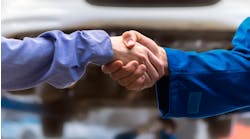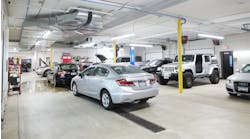The National Science Foundation funded Science and Technology Center for Coastal Margin Observation and Predication (CMOP) has purchased two REMUS 100s for its studies from Hydroid, LLC, a manufacturer of Autonomous Underwater Vehicles (AUVs). The CMOP vision focuses on four goals: enable nearly ubiquitous, river-to-ocean observation of physical and ecological processes; advance understanding of these processes in order to manage, operate, and sustain coastal resources and ecosystems effectively; foster technological innovation; and train a diverse, scientifically literate and technologically savvy workforce. “A multi-month effort was undertaken to determine the best commercially available AUV applicable to CMOP, given operational and funding constraints,” says Russ Light, department head and principal engineer of the Applied Physics Laboratory at the University of Washington. “The investigation included a workshop of existing academic users of various systems. The REMUS 100 from Hydroid was selected as the best choice based on this review.” The Science and Technology center is a multi-institutional partnership led by the Oregon Health & Science University, with Oregon State University and University of Washington as major partners. It was formed to facilitate interdisciplinary research, technology development, education and knowledge transfer in order to achieve a better understanding of physical, chemical and biological processes regulating river-to-ocean ecosystems. CMOP is focusing its efforts on the Columbia River and the adjacent Pacific Northwest estuaries and coastal ocean as a prototype for similar systems worldwide. The REMUS 100 system will be deployed in CMOP's experimental observation network as mobile platforms for oceanographic sensors. The environmental monitoring data they record will play a critical role in analyzing the impact of humans on estuaries and coastal environments. The AUV will also be used to determine the influence of climate on physical and biological conditions and the variability of coastal margins and to identify the role of coastal margins in global elemental cycles. “AUVs will add critically to our ability to observe high-gradient regions in the Columbia River plume, and perhaps even in the estuary,” says CMOP director and OHSU professor António Baptista. The two CMOP AUVs will be deployed periodically throughout each operational year. Users of the REMUS 100 can acquire or adapt new specialized sensors for the vehicles as required for specific scientific objectives. “We are very pleased to be the supplier of the REMUS 100 to the Science and Technology center for CMOP research,” ays Christopher von Alt, president and one of the co-founders of Hydroid. “We expect that CMOP scientists will task the REMUS 100 with complex missions and fully anticipate the REMUS 100 to once again prove it is capable of gathering data in adverse marine environments.” |


